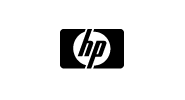Core foundations of Microsoft .NET 2.0 development (MOC 2956)
Course number HE661S
Delivery method
Instructor-led training (ILT)
Prerequisites
Before attending this course, students must be able to:
- Understand the purpose and components of the .NET 2.0 Framework and the Common Language Runtime
- Understand the components of typical .NET 2.0 applications
- Understand and use .NET Framework 2.0 Common Type System (CTS) and how to use variable types including dates/times, numbers, strings, objects and arrays
- Use basic file IO classes from the Framework such as StreamReader, StreamWriter, Directory, DirectoryInfo, File and FileInfo
- Use basic Framework provided type conversions
- Use basic Framework provided text conversion and manipulations including StringBuilder
- Use classes with the System.Collections namespace
- Use the System.Math class
- Basic language syntax for decision structures, loop structures, declaring and using variables
- Write code using language specific functionality such as the My. classes for Visual Basic
- Understand classes and objects, methods, properties and functions
- Write code to implement overridden methods
- Understand the class hierarchy present in the .NET Framework 2.0
- Write code to declare a class
- Write code to create an instance of a class
- Write code to compare if an object is equal to another object
- Write code to dispose of an object
- Understand the lifecycle of an object
- Write code to handle exceptions via a try-catch bloc
- Write code to implement static methods and properties
- Opening and closing solutions
- Opening and closing projects
- Adding projects to a solution
- Removing projects from a solution
- Creating new project types
- Adding new and existing files to a project
- Compile a project
- Carry out basic project debugging
- Use the object browser
- Use the help system especially provided to help VB6.0 developers migrate to .NET
- Understand assemblies and how they relate to deployment
- Understand and create a deployment project
- Be able to create deployment wizards using the Deployment Setup wizard
- Select an appropriate deployment project based on the application
Audience
The audience for this course consists of Application Developers with the skills to develop business applications by using Visual Studio 2005 with either Visual Basic .NET or Visual C#.
Benefits to you
After completing this course, students will gain the skills to:
- Develop applications that use system types and collections
- Implement service processes, threading, and application domains in a .NET Framework application
- Embed configuration, diagnostic, management, and installation features into a .NET Framework application
- Implement serialization and input/output functionality in a .NET Framework application
Course outline
Module 1: Developing Applications by Using Types and Standard Contracts
Lessons
- Explaining Value Types and Reference Types
- Working with Generic Types
- Implementing .NET Standard Contract
- Implementing Delegates and Events
- Working with Attributes and Exceptions
Lab: Developing Applications by Using Types and Standard Contracts
- Using Nullable Types
- Defining a Generic Type
- Implementing Standard .NET Framework Interfaces
- Throwing and Catching Exceptions (If Time Permits)
- Raising and Handling Events (If Time Permits)
Module 2: Managing Common Data by Using Collections
Lessons
- Working with Object-Based Collections
- Working with Generic Collections
- Working with Specialized Collections
Lab: Managing Common Data by Using Collections
- Using the Dictionary Generic Collection
- Using the List Generic Collection
- Using the NameValueCollection Specialized Collection
Module 3: Deploying and Configuring Assemblies
Lessons
- Installing and Configuring Assemblies
- Installing Assemblies by Using the Installer
- Configuring Assemblies
- Configuring the .NET Framework
Lab: Deploying and Configuring Assemblies
- Managing the Configuration Settings of an Assembly
- Deploying an Application by Using Windows Installer
Module 4: Monitoring and Debugging Applications
Lessons
- Working with Application Processes
- Managing Application Performance
- Reading and Writing to an Event Log
- Debugging and Tracing Applications
Lab: Monitoring and Debugging Applications
- Monitoring Application Performance
- Logging Information in a Custom Event Log
- Adding and Configuring Tracing Statements in an Application
Module 5: Reading and Writing Files
Lessons
- Managing the File System
- Reading and Writing Data by Using Streams
- Compressing and Protecting Data by Using Streams
- Improving Application Security by Using Isolated Storage
Lab: Reading and Writing to File and Folders
- Archiving Files
- Compressing Files
- Storing and Retrieving User Preferences
Module 6: Serializing Data
Lessons
- Serializing and Deserializing Objects by Using Runtime Serialization
- Customizing the Runtime Serialization and Deserialization Processes
- Serializing and Deserializing Objects As XML Data
Lab: Serializing Data
- Serializing and Deserializing Data Across a Network by Using Runtime Serialization
- Customizing the Runtime Serialization Process
- Serializing and Deserializing Data as XML
- Upis u radnu knjižicu: ne
- Certifikat: ne
- Uvjerenje: ne
- In-house: ne
- Svjedodžba: ne
- Diploma: ne
